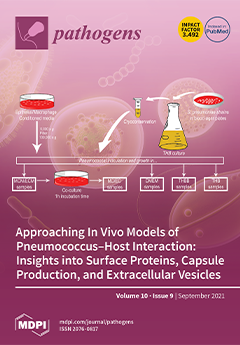Background:
Stephanofilaria spp. nematodes are associated with cutaneous lesions in cattle and other livestock and mammalian wildlife species. In Australia,
Haematobia irritans exigua, commonly known as buffalo fly (BF) transmits a well-described but presently unnamed species of
Stephanofilaria, which has been speculatively implicated in the aetiology of BF lesions. The sensitivity of current techniques for detecting
Stephanofilaria spp. in skin lesions and vector species is low, and there is no genomic sequence for any member of the genus
Stephanofilaria currently available in sequence databases. Methods: To develop molecular assays for the detection of the Australian
Stephanofilaria sp., skin biopsies were collected from freshly slaughtered cattle with typical lesions near the medial canthus. Adult nematodes and microfilariae were isolated from the biopsies using a saline recovery technique. The nematodes were morphologically identified as
Stephanofilaria sp. by scanning electron microscopy. DNA was extracted and the internal transcribed spacer 2 (ITS2) region of rDNA, and the cytochrome c oxidase subunit 1 (
cox1) region of mtDNA was amplified and sequenced.
Stephanofilaria sp. specific polymerase chain reaction (PCR) and qPCR assays (SYBR Green
® and TaqMan™) were developed and optimised from the novel ITS2 sequence obtained. The specificity of each assay was confirmed by testing against nematode species
Onchocerca gibsoni and
Dirofilaria immitis, as well as host (bovine) and BF DNA. Results: Scanning electron microscopy of the anterior and posterior ends of isolated nematodes confirmed
Stephanofilaria sp. A phylogenetic analysis of the
cox1 sequence demonstrated that this species is most closely related to
Thelazia callipaeda, a parasitic nematode that is a common cause of thelaziasis (or eyeworm infestation) in humans, dogs, and cats. Both conventional and qPCR assays specifically amplified DNA from
Stephanofilaria sp. Conventional PCR, TaqMan™, and SYBR Green
® assays were shown to detect 1 ng, 1 pg, and 100 fg of
Stephanofilaria DNA, respectively. Both qPCR assays detected DNA from single
Stephanofilaria microfilaria. Conclusion: Molecular diagnostic assays developed in this study showed high specificity and sensitivity for
Stephanofilaria sp. DNA. The availability of an accurate and sensitive PCR assay for
Stephanofilaria will assist in determining its role in the pathogenesis of cattle skin lesions, as well as in understanding its epidemiological dynamics. This assay may also have application for use in epidemiological studies with other species of
Stephanofilaria, most particularly closely related
S. stilesi, but this will require confirmation.
Full article






